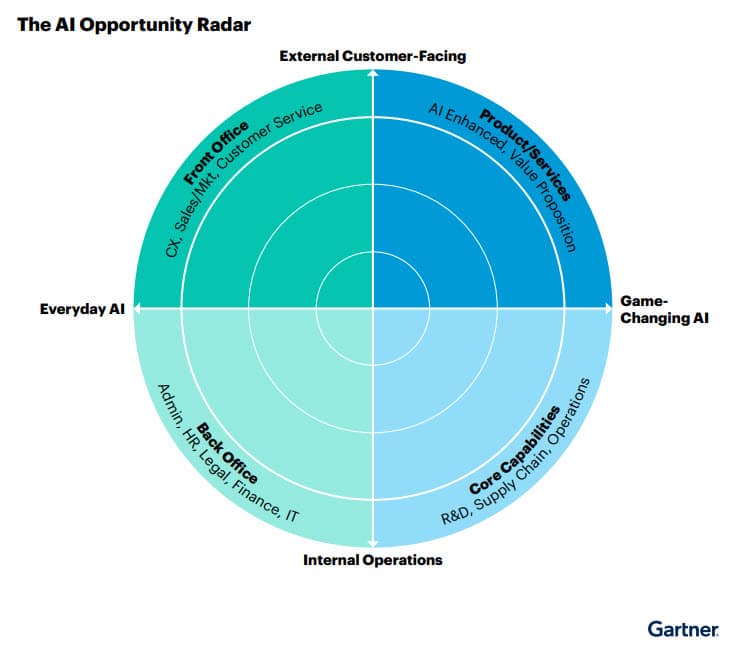Artificial intelligence is rapidly progressing from a promising technology to an integral part of business, changing how humans and machines interact. With recent advances in AI like chatbots powered by models such as ChatGPT, machines are shifting from tools to collaborative teammates. This wholesale change, dubbed by Gartner as “generative AI”, brings tremendous opportunities to boost productivity and enable new products and services. However, it also poses novel threats that organizations must proactively manage, from security risks to ethics concerns over AI’s societal impact.
In a recent report, Gartner advised that technology leaders have a crucial leadership role in harnessing AI’s upside while mitigating its downside as adoption accelerates. Specifically, CIOs must steer their organizations across three key imperatives.

First, engage the executive team, including the CEO, to define an “AI ambition”. Using Gartner’s AI Opportunity Radar, plot where and how aggressively AI capabilities will be adopted – will the focus be on driving internal productivity or pursuing risky but more rewarding AI-enabled transformation? And will AI directly face customers? Making these strategic choices collectively is vital groundwork.
Second, organizations must become “AI-ready” across three pillars: security, data and principles. Security practices must address AI’s novel threats, like generative models potentially exposing sensitive information. Data must be purposed for AI via governance and quality assurance that leads to more trustworthy AI behaviors aligned with business objectives. And principles are required to guide AI adoption ethically amidst huge technology change.
Finally, investments in AI must be weighed across “defend”, “extend” and “upend” scenarios. The first helps preserve competitiveness affordably while the latter strives to profoundly transform business models, at substantial cost and risk. CIOs must partner with executive teams to allocate funding rationally based on their appetite for AI-driven innovation versus proven returns.
With machines rapidly advancing beyond basic analytical tools to creative, conversational teammates, the machine age has arrived. CIO leadership that addresses AI’s risks upfront while pursuing its bountiful opportunities thoughtfully will determine who flourishes in this fast-unfolding era.

